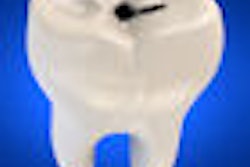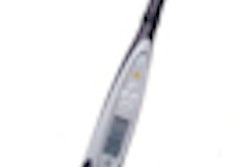Digital images of pit-and-fissure discoloration can aid in the diagnosis of occlusal caries, according to researchers from Tokyo Medical and Dental University (International Journal of Dentistry, March 7, 2010).
They examined 100 teeth (36 premolars and 64 molars) with pit-and-fissure discoloration from 19 patients to obtain the fractal dimension (FD) and the proportion of the area of pit-and-fissure discoloration to the area of occlusal surface (PA). The occlusal surface of each tooth was washed to remove dental plaque without abrasive paste. Then pit-and-fissure discoloration was measured three times using KaVo Dental's Diagnodent (DD).
Next, the occlusal surface of each tooth was photographed as large as possible with an intraoral digital camera. Each image was stored in a personal computer using a video capture interface. Without knowing the DD, a dentist preliminarily diagnosed each tooth using visual inspection and tactile examination to decide which treatment plan would be appropriate (preventive or operative).
The sensitivity and specificity of FD, PA, DD, and the combination of FD and PA compared to the dentists' diagnoses were calculated. They found that FD, PA, and DD increased with the depth of the caries. There were also significant correlations among FD, PA, and DD.
The sensitivities of FD, PA, DD, and the combination of FD and PA were 0.89, 0.47, 0.69, and 0.86, respectively, while the specificities were 0.84, 0.95, 0.91, and 0.86, respectively.
"Although further research is needed for the practical use, it is possible to use the analysis of digital images of pit-and-fissure molar discoloration as a diagnostic tool," the researchers concluded.
Copyright © 2010 DrBicuspid.com



















